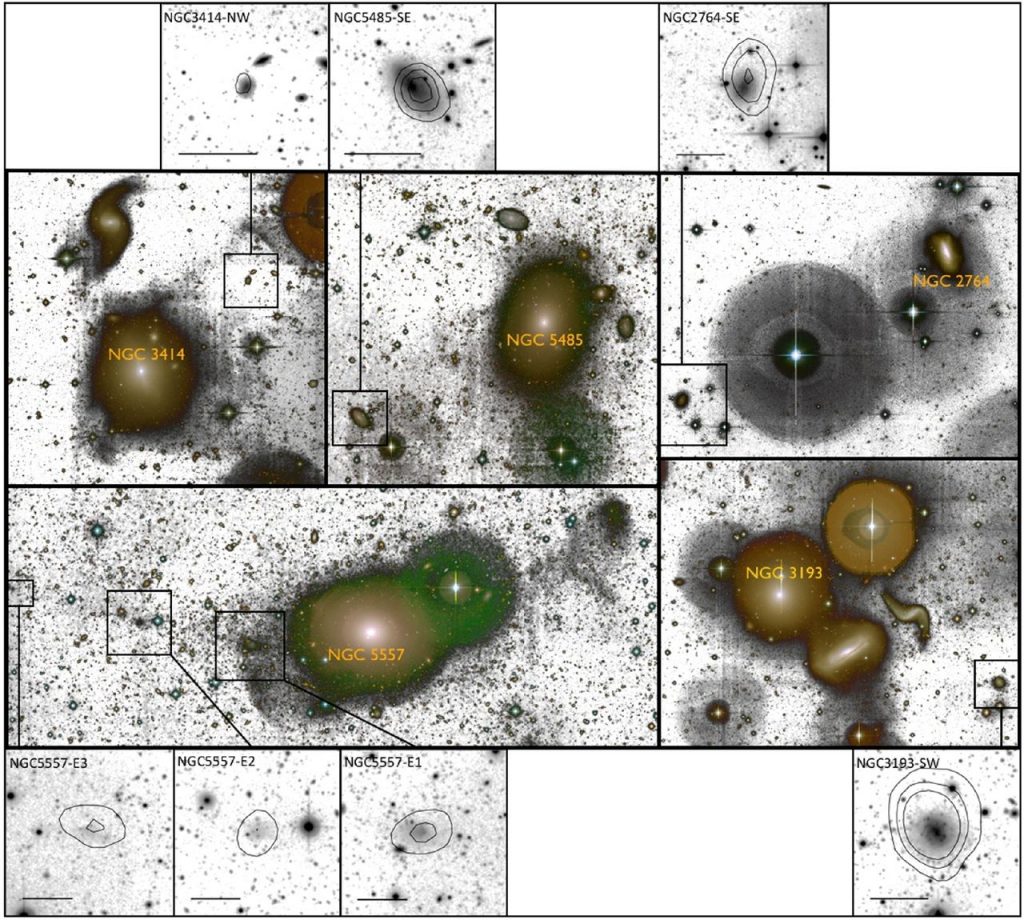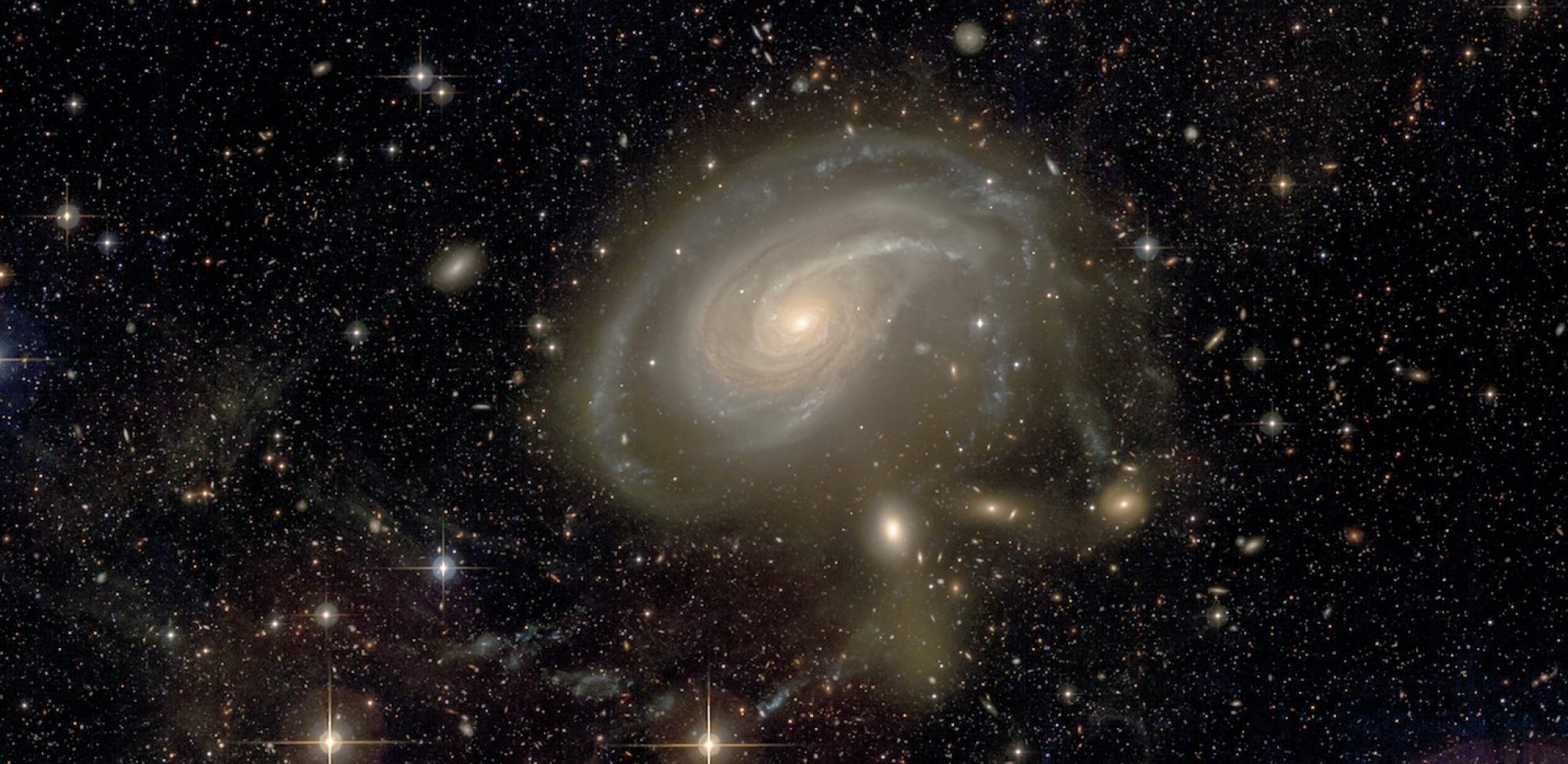
It has recently been proposed that the dwarf spheroidal galaxies located in the Local Group discs of satellites (DoSs) may be tidal dwarf galaxies (TDGs) born in a major merger at least 5 Gyr ago. Whether TDGs can live that long is still poorly constrained by observations. As part of deep optical and H I surveys with the Canada-France-Hawaii Telescope (CFHT) MegaCam camera and Westerbork Synthesis Radio Telescope made within the ATLAS3D project, and follow-up spectroscopic observations with the Gemini-North telescope, we have discovered old TDG candidates around several early-type galaxies.
At least one of them has an oxygen abundance close to solar, as expected for a tidal origin. This confirmed pre-enriched object is located within the gigantic, but very low surface brightness, tidal tail that emanates from the elliptical galaxy, NGC 5557. An age of 4 Gyr estimated from its SED fitting makes it the oldest securely identified TDG ever found so far. We investigated the structural and gaseous properties of the TDG and of a companion located in the same collisional debris, and thus most likely of tidal origin as well. Despite several Gyr of evolution close to their parent galaxies, they kept a large gas reservoir. Their central surface brightness is low and their effective radius much larger than that of typical dwarf galaxies of the same mass. This possibly provides us with criteria to identify tidal objects which can be more easily checked than the traditional ones requiring deep spectroscopic observations. In view of the above, we discuss the survival time of TDGs and question the tidal origin of the DoSs.
Published in Duc et al., 2014, MNRAS 440, 1458

